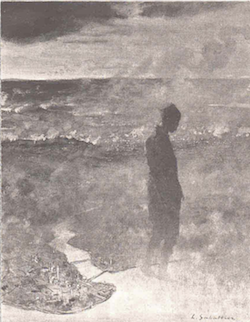 "Balkan" originates from the Turkish word for "rough, mountainous territory," used by the Turks to refer to the mountain range traversing Bulgaria from west to east. The term "Balkan" was reportedly first adopted in the West for this mountain range in the late 15th century. By the end of the 18th century, writers began applying this name to the broader area between the Adriatic and the Black Sea. While Europeans called these regions the "Balkans," the Turks, who initially entered the area in the 5th century A.D. under Attila's leadership, referred to it as "Rumelia."
"Balkan" originates from the Turkish word for "rough, mountainous territory," used by the Turks to refer to the mountain range traversing Bulgaria from west to east. The term "Balkan" was reportedly first adopted in the West for this mountain range in the late 15th century. By the end of the 18th century, writers began applying this name to the broader area between the Adriatic and the Black Sea. While Europeans called these regions the "Balkans," the Turks, who initially entered the area in the 5th century A.D. under Attila's leadership, referred to it as "Rumelia."
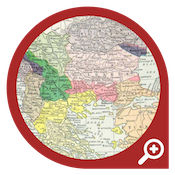 The Ottoman Turks conquered the Balkan Peninsula during the 14th and 15th centuries, continuing to expand their holdings there until the 16th century. In 1354, Turkish pioneers, led by Gazi Süleyman Pasha, son of Sultan Orhan, crossed the Dardanelles and seized a Byzantine fortress on the Gallipoli peninsula. By the time of Sultan Murat's death on the battlefield in 1389, the entire area from the Danube to the Adriatic Sea and the Peloponnese was under Turkish dominion. Turkish territorial expansion persisted until the unsuccessful second siege of Vienna in 1683. Throughout these centuries, millions of Turks migrated from Anatolia to the Balkans, residing there in relatively peaceful coexistence with the Christian population.
The Ottoman Turks conquered the Balkan Peninsula during the 14th and 15th centuries, continuing to expand their holdings there until the 16th century. In 1354, Turkish pioneers, led by Gazi Süleyman Pasha, son of Sultan Orhan, crossed the Dardanelles and seized a Byzantine fortress on the Gallipoli peninsula. By the time of Sultan Murat's death on the battlefield in 1389, the entire area from the Danube to the Adriatic Sea and the Peloponnese was under Turkish dominion. Turkish territorial expansion persisted until the unsuccessful second siege of Vienna in 1683. Throughout these centuries, millions of Turks migrated from Anatolia to the Balkans, residing there in relatively peaceful coexistence with the Christian population.
The decline of Ottoman rule in the Balkans began with the signing of the Treaty of Karlowitz in 1699. Progress within the Empire was sluggish, and there was a notable failure to establish fair political representation for minority groups. The advent of the French Revolution in 1789 ignited nationalistic sentiments in the Balkans. The 19th century became a period where various ethnic groups across the Empire sought to break free from Ottoman rule.
The Eastern Question
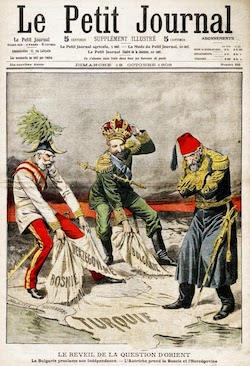
The roots of the Balkan Wars lie in the emergence of nation-states at the fringes of the Ottoman Empire during the 19th century. The Balkan Peninsula was a mosaic of diverse ethnicities, languages, and religious beliefs, many of which opposed Ottoman dominance. In the late 19th century, the "Eastern Question" became a popular term used to describe the potential consequences of the power vacuum if the Ottoman Empire, often referred to as the "Sick Man of Europe," lost control over the Balkan provinces. Great Powers had conflicting regional ambitions, considering the region their "backyard." These aspirations led to diplomatic conflicts among the Great Powers vying for influence in the Ottoman territories.
Russia sought access to the Mediterranean through the Turkish straits and pursued a pan-Slavic policy, supporting Bulgaria and Serbia as protectors of the Orthodox Christian Slavic peoples. Britain aimed to prevent Russia's access to warm waters, supporting the integrity of the Ottoman Empire while also backing limited expansion of Greece as an alternative plan. France aimed to bolster its position in the region, while Austria-Hungary desired the continued existence of the Ottoman Empire, as both empires were multiethnic entities governed by a small elite. The collapse of one would affect the other. Notably, the Austro-Hungarian Empire, which had significant Serbian and Croatian populations, strongly opposed a stronger Serbia. Meanwhile, Germany's Drang nach Osten policy aimed to make the Ottoman Empire a de facto colony, thus supporting its integrity.
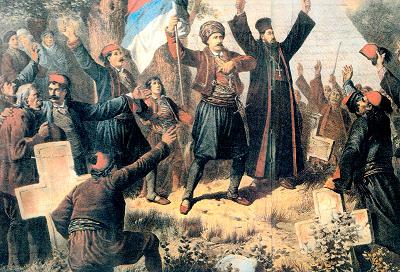
The Great Powers exploited the nationalist feelings in the region in order to destabilize and further weaken the Ottoman rule to their advantage. Their formula was simple. First the Christian minorities in the Balkans were encouraged to revolt and then they themselves would interfere and ask the Ottoman government to realize reforms that would give more rights to those minorities. If the Ottoman government would carry out the requested reforms, then they would first ask for autonomy and then independence; if not, there would be war. Naturally, autonomous or independent states would emerge after these wars.
Other Balkan nationalities were inspired by the success of the Serbians. In 1814, Greek nationalists had formed a secret organisation called Φιλικὴ Ἑταιρεία - Philiki Eteria (Society of Friends) in Odessa. With the support of wealthy Greek exile communities in Europe and USA and covert assistance from Russia, this organisation launched an uprising simultaneously in Wallachia and the Peloponnese in 1821 led by Alexander Ypsilanti, aiming to create an independent Greece with the ultimate purpose of reviving the Byzantine Empire. Soon, the revolt spread to whole Greece, Crete, the Aegean Sea and Cyprus. This uprising and the accompanying violence against the local Muslims caused great anger in Istanbul, where not only the rich Greek merchants lost their wealth and influence, but also Gregory V, the Patriarch of Istanbul was executed in retaliation.
Inconclusive fighting between Greeks and Ottomans continued until 1825, when the Sublime Porte asked for help from the Governor of Egypt, Mehmet Ali Pasha. Although this support was of great value for the Ottoman efforts against the Greek movement, which managed to crush the rebellion in 1825 and recapture Athens in 1827, there was a growing pro-Greek attitude in Europe, which soon formed into a form of military alliance that turned the tide against the Turks. On 20 October 1827, the British, Russian and French fleets attacked and destroyed the Ottoman fleet at the Battle of Navarino. A settlement was determined in 1832 the European powers at a conference in London; where Greece was acknowledged as an independent state. This was the first time history when a European territory of the Ottoman Empire had become an independent state. It also set an example for other ethnic groups in the Balkans and let to the further deterioration of Pax Ottomanica.
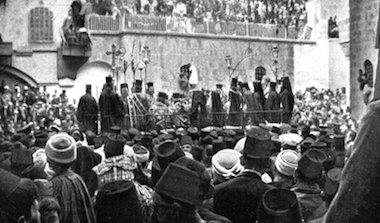
In 1839, the Sublime Porte issued the Tanzimat Fermanı, a reform decree aimed at establishing a modern state structure and fostering equality between Muslims and non-Muslim ethnic groups. This decree marked the initiation of a series of reforms undertaken by the Ottoman Empire. Subsequently, in 1856, the Islahat Fermanı, another reform package, was introduced, further expanding the rights of minority communities. Despite the Ottoman Empire's pursuit of modernization, these reforms also exacerbated ethnic tensions.
The Greek Orthodox Church in Istanbul, traditionally regarding itself as superior to all non-Muslim subjects in the Empire, expressed discontent with the principle of "equality between all groups." Seeking to safeguard its influence, the church's resistance prompted minority groups to intensify efforts towards establishing independent churches. Consequently, the Romanian Church was founded in 1865, followed by the establishment of the Bulgarian Church in 1870. These additions supplemented existing churches, including the Armenian Catholic Church inaugurated in 1830 and the Armenian Protestant Church established in 1848.
The establishment of these churches triggered revolts. Following the unsuccessful revolutions of 1848 in Moldavia and Wallachia, European intervention resulted in the union of these principalities, forming Romania in 1861. Alexander Cuza was crowned as the Prince of Romania, succeeded by Carol in 1866. Simultaneously, Pan-Slavic endeavors spearheaded by Russia found success among Ottoman subjects of Slavic origin.
Turco-Russian War of 1877-1878
In 1875, a significant insurrection erupted in Bosnia and Herzegovina, prompted by the onerous tax burdens imposed under Ottoman rule. Insurgents initiated assaults and looting against the possessions of influential Muslim residents, who found themselves compelled to defend against the aggression due to the tardiness of Ottoman governmental intervention. Subsequently, the rebellion extended to Bulgaria. The circumstances in Bosnia-Herzegovina, coupled with Russian backing, prompted the principalities of Serbia and Montenegro to declare war against the Ottoman Empire. On 8 July 1875, Russia and Austria-Hungary clandestinely entered into the Reichstadt Agreement, outlining the partitioning of the Balkan Peninsula contingent upon the war's outcome. However, these arrangements proved futile as the Ottoman Army successfully quelled the uprising. In May-June 1876, under the leadership of Abdülkerim Nadir Pasha, two divisions decisively suppressed the Bulgarian rebels. On 29 October 1876, Gazi Osman Pasha's forces triumphed over the Serbians in the Battle of Alexinats, narrowly avoiding the entry into Belgrade, thanks only to Russian intervention.
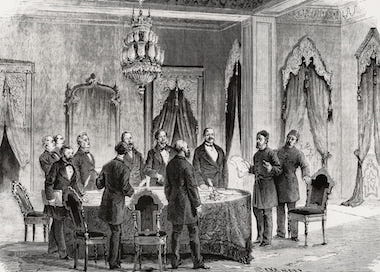
The recurring involvement of Russia in Balkan affairs raised apprehensions among European powers, leading to the convening of a conference. The Istanbul Conference commenced on 23 December 1876, four months subsequent to Sultan Abdülhamid II's ascension to the Ottoman throne following the brief and mentally troubled reign of Sultan Murat V. The predecessor of Murat, Sultan Abdülaziz, was deposed by his ministers on 30 May 1876, and his subsequent demise a few days later was attributed to suicide. The Istanbul Conference, convened nine times over 29 days, saw the Great Powers deliberating on the demarcation of one or more prospective autonomous Bulgarian provinces within the Ottoman Empire. However, the conference was abruptly interrupted by the Ottoman foreign minister, who informed the delegates of the Ottoman Empire's approval of a new Constitution, ensuring the rights and freedoms of all ethnic minorities.
Notwithstanding this circumstance, a unanimous agreement eluded the Great Powers, primarily due to the reservations harboured by Britain and France regarding Russian access to the Turkish straits. Russia maintained a belligerent stance towards the Ottoman Empire, culminating in a declaration of war on 24 April 1877. The Turco-Russian War of 1877-78, alternatively denoted as “93 Harbi” (War of 93) in Turkish (referencing the year 1293 in the lunar calendar corresponding to 1877), proved to be a significant calamity for the Ottoman Empire. Confronted with a vastly superior Russian Army on two fronts, namely Caucasus and Danube, the Ottoman forces encountered formidable challenges.
On the Caucasian front, the Ottoman Army, under the command of Ahmet Muhtar Pasha, demonstrated resilient resistance against the Russian forces, achieving victories at Halyaz and Zivin, as well as prevailing in the battles of Gedikler (25 August 1877) and Yahniler (4 October 1877). Regrettably, these triumphs could not forestall the relinquishment of Doğubeyazıt and Ardahan. Following the Russian success at the Battle of Alacadağ on 15 October, the cohesion of Ottoman forces began to disintegrate. Subsequently, Kars succumbed in November, and Ahmet Muhtar Pasha's defensive line between Kars and Erzurum collapsed shortly thereafter.
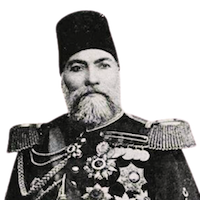
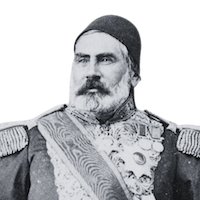
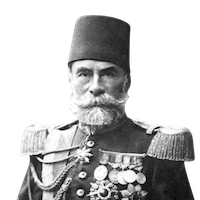
On the Danube front, three Turkish armies, commanded by Abdülkerim Nadir Pasha, confronted the Russian Army, supported by Romanian, Serbian, and Montenegrin units. Hostilities commenced on 21 June 1877 with a significant Russian offensive. Following the capture of Trnova and Nicopolis, the Russians advanced to the Pass of Shipka. The Turkish army's most noteworthy success during this period was the legendary defence of Pleven, where troops led by Gazi Osman Pasha withstood the Russian siege for five months, yielding only in the face of the imminent threat of starvation when enemy forces severed all supply routes to the fortified city. Following the fall of Pleven, the Russians rapidly advanced into Ottoman territory, capturing Sofia, Stara Zagora, and Plovdiv, and crossing the River Maritsa. Edirne succumbed on 20 January 1878, and Russian forces penetrated into the suburbs of Istanbul.
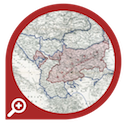 Having sustained substantial losses and facing pressure from the British, Russia acquiesced to the truce proposed by the Ottoman Empire but persisted in advancing towards Istanbul. In response, Britain dispatched a fleet of battleships to dissuade Russia from entering the city, leading to the halting of Russian troops at San Stefano (present-day Yeşilköy) in the suburbs of the Ottoman capital. Subsequently, with the signing of the Treaty of San Stefano on 3 March 1878, the Ottoman Empire acknowledged the independence of Romania, Serbia, Montenegro, and the autonomy of Bulgaria. Later, the Great Powers compelled revisions to this treaty during the Congress of Berlin. As per prior agreements among the Great Powers, preventing the establishment of a sizeable new Slavic state, Bulgaria was to be divided. The northern and eastern parts were to revert to principalities as before (Principality of Bulgaria and Eastern Rumelia), albeit with different governors. Simultaneously, the Macedonian region, initially part of Bulgaria under San Stefano, was to be placed back under direct Ottoman administration.
Having sustained substantial losses and facing pressure from the British, Russia acquiesced to the truce proposed by the Ottoman Empire but persisted in advancing towards Istanbul. In response, Britain dispatched a fleet of battleships to dissuade Russia from entering the city, leading to the halting of Russian troops at San Stefano (present-day Yeşilköy) in the suburbs of the Ottoman capital. Subsequently, with the signing of the Treaty of San Stefano on 3 March 1878, the Ottoman Empire acknowledged the independence of Romania, Serbia, Montenegro, and the autonomy of Bulgaria. Later, the Great Powers compelled revisions to this treaty during the Congress of Berlin. As per prior agreements among the Great Powers, preventing the establishment of a sizeable new Slavic state, Bulgaria was to be divided. The northern and eastern parts were to revert to principalities as before (Principality of Bulgaria and Eastern Rumelia), albeit with different governors. Simultaneously, the Macedonian region, initially part of Bulgaria under San Stefano, was to be placed back under direct Ottoman administration.
The conflict resulted in a decline in the Muslim population in Bulgaria between 1876 and 1882, with an estimated 262,000 fatalities due to various reasons and 515,000 individuals compelled to emigrate.
Nevertheless, the Congress of Berlin engendered considerable tensions among the Balkan nations as it deviated from the principle of nationality in delineating new boundaries. The long-standing coexistence of different nationalities in many areas made it impracticable to adhere strictly to this principle. None of the Balkan nations achieved national unification within a single state, prompting the pursuit of this goal to become a focal point in their foreign policies. This ambition led to a series of crises and diplomatic endeavours aimed at resolving the issues stemming from the Congress of Berlin. The signing of the "League of Three Emperors" convention by Russia, Germany, and Austria-Hungary in 1881 failed to appease the Balkan nationalists.
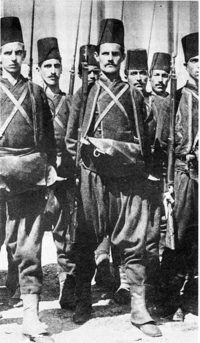
To start with, Bulgarians expressed dissatisfaction with the arrangements in Berlin. In 1885, Bulgarian militia in East Rumelia launched an assault on the Ottoman Government House in Plovdiv, compelling Governor Gavril Pasha to vacate the city. They assumed control of all transportation and communication infrastructure, subsequently proclaiming the annexation of East Rumelia to the Principality of Bulgaria. The parliament in Sofia endorsed this annexation, and Prince Alexander ascended to the throne as the ruler of both Bulgaria and East Rumelia.
Simultaneously, the entire Balkan region became a volatile situation, with an uprising erupting on the island of Crete, where insurgents sought unification with Greece. European powers intervened and persuaded the Sublime Porte to grant autonomy to Crete. However, the Greeks insisted on complete unification. The crisis escalated into a full-scale war in 1897, during which the Turkish army repelled the Greeks in Thessaly and Epirus, advancing towards Athens. The conflict concluded with further intervention by the Great Powers, who negotiated favourable armistice terms for the Greek side.
The Macedonian Issue
Sultan Abdülhamid pursued a policy in addressing challenges in the Balkans by exploiting conflicts among the newly independent Balkan states, thereby thwarting their potential unity against the Ottoman Empire. This strategy found justification in the absence of shared objectives among the Balkan states during a period marked by pervasive mistrust. Abdülhamid II successfully impeded movements in the Balkans by capitalizing on this discord. Nevertheless, the Sublime Porte refrained from challenging the fait accompli of Bulgaria. Instead, through an agreement signed in 1886, it sanctioned the annexation, albeit with the stipulation that Rhodopi, a town with a Muslim majority, would remain within the Ottoman Empire's boundaries.
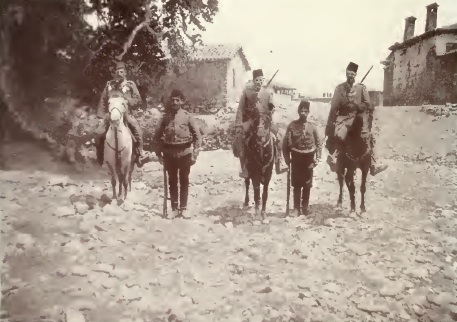
The concept of a "Greater Bulgaria" necessitated access to the Aegean Sea and the acquisition of Macedonia. However, multiple claimants, including Serbia and Greece, contended that the province should rightfully belong to them. This clash of interests transformed Macedonia into a fertile ground for bands and terrorist organizations, predominantly Bulgarian, causing concern for both the Serbs and the Greeks.
Abdülhamid's endeavours to institute reforms in Macedonia in 1902 proved futile. Subsequently, in 1903, a committee in Salonica orchestrated the bombing of the Ottoman Bank branch, catalysing a widespread revolt involving Macedonian Slavs, Albanians, and Bulgarians. The uprising persisted for three months before being quelled by the Turkish army.
"The entirety of Macedonia found itself besieged by a series of raids, acts of arson, kidnappings, and the payment of ransom from government coffers, as well as train robberies, destruction, and bloodshed. The atmosphere was tense, with people in a perpetual state of vigilance. Regardless of their religious or linguistic affiliations, Macedonian villagers went to bed uncertain whether they would awaken the following morning. Muslim villages, farms, and even towns faced constant threats from marauding bands. The region was in the grip of terror and anarchy, with formidable gangs considering it their opportune moment for reprisal against a government that seemed powerless. Indeed, the Ottoman government itself conducted raids on villages in an effort to uncover the origins of these bands, confiscating firearms and grenades. Churches, priest lodgings, schools, and teacher hostels served as de facto arsenals, and individuals apprehended in possession of such weaponry faced sentences ranging from imprisonment and exile to, in certain instances, execution. However, timely intervention by the Russian Consul General, along with his assistance and intercession, provided swift relief. Reflecting on my childhood, likely during the 1905 uprising, I recall Greek and Bulgarian band members being liberated from the Edirne prison by the Russian Consul General. They were triumphantly returned to their villages amid cheers and celebrations..." (as recounted by Turkish historian Şevket Süreyya Aydemir)
In 1908, the Young Turk Revolution reinstated the constitutional order in Turkey, ushering in a representative and multi-ethnic Ottoman parliament. Of the 275 deputies, 140 were Turks, 87 represented Muslim minorities, and 48 hailed from non-Muslim communities, including 23 Greeks, 12 Armenians, 5 Jews, 4 Bulgarians, 3 Serbs, and 1 Romanian. This development kindled heightened expectations for reforms and autonomy among ethnic groups in the Balkans.
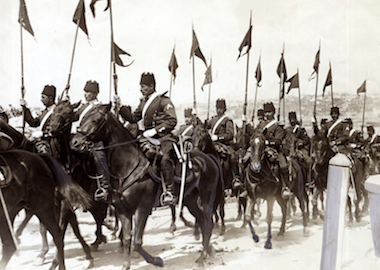
In October 1908, seizing the opportunity presented by the domestic political instability of the Ottoman Empire, Austria-Hungary annexed Bosnia-Herzegovina, a region it had occupied since 1878. Concurrently, Bulgaria declared full independence, a status recognized by the Sublime Porte in 1909. The ensuing year witnessed an Albanian insurrection in Kosovo and the establishment of Montenegro as an independent kingdom. Dissatisfaction prevailed among the Balkan nationalities, each harboring aspirations for territorial gains. Serbia sought the acquisition of former Serb territories, particularly Novi Pazar and Kosovo. The Greeks aspired to unite with Crete and reverse the setbacks of 1897. Bulgarians cast their gaze on Ottoman Thrace and Macedonia, where a significant portion of the population comprised their compatriots.
Subsequent to the events of 1908, developments unfolded rapidly, leading to the gradual erosion of the Ottoman Empire's remaining Balkan territories within a few years.
Balkan States against the Ottoman Empire
The Austrian annexation of Bosnia and Herzegovina in 1908 constitutes a pivotal historical juncture, as it served to galvanize the Slavic populations against Austrian expansionist endeavors. This occurrence not only signifies the zenith of the conflict between Slavism and Germanism but also steered the gaze of the newly-independent Balkan states towards the division of the remaining Ottoman territories in Europe.
With their ambitions for Bosnia and Herzegovina dashed by the Austrian annexation, the Serbs redirected their focus towards expansion and the restoration of the Serbian Kingdom of the 14th century, concentrating efforts on Kosovo and southern regions. Given that the annexation of Bosnia impeded their path to the Adriatic, the Serbs subsequently set their sights on Macedonia as a gateway to the Aegean.
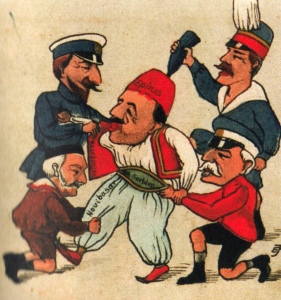
From this juncture onward, a sequence of alliances has either united the Balkan states or brought them into confrontation with one another. Notably, Bulgaria enjoyed the backing of Russia and harbored ambitions concerning Macedonia. In Greece, a progressive administration led by Eleftherios Venizelos embraced the Μεγάλη Ιδέα - Megali Idea, the goal of establishing a Greek state encompassing all ethnic Greeks and incorporating Ottoman territories with substantial Greek populations, including those in Anatolia. This objective, along with the matter of Crete, occupied a prominent position on its agenda. Greek bands operated actively in Macedonia, paralleling the actions of the Bulgarians. Concurrently, in August 1910, Montenegro emulated Bulgaria's precedent by assuming the status of a kingdom.
Distinct differences of opinion arose among the Balkan states concerning Macedonia. Bulgaria advocated for the province's autonomy, while Serbia and Greece pursued a partition. Nevertheless, when Italy initiated an invasion of Tripolitania, the Balkan states deemed it opportune to set aside their dissimilarities and jointly act against the faltering Ottoman Empire. In the spring of 1912, consultations among Serbia, Bulgaria, and Greece culminated in the establishment of a network of military alliances, subsequently known as the Balkan League. Montenegro joined this coalition at a later stage.
The discord among the Balkan states persisted regarding Macedonia. Bulgaria persisted in its desire for the province to achieve autonomy, in contrast to Serbia and Greece, who sought partition. However, the invasion of Tripolitania by Italy prompted the Balkan states to set aside their divergent views and collaborate against the ailing Ottoman Empire. In the spring of 1912, consultations involving Serbia, Bulgaria, and Greece led to the formation of a military alliance network known as the Balkan League. Montenegro joined this alliance subsequently.
The Great Powers of Europe were inclined towards maintaining the status quo in the Balkans. The preservation of the Ottoman Empire served their interests in the region. Alternatively, should the Ottoman Empire prove untenable, the preference was for a partitioning of the Balkans among smaller nations, rather than allowing a single dominant power to control the entire area. In essence, if the Ottoman Empire were to exit the stage, Britain and France would prefer to witness a Balkan alliance under the auspices of Russia, as opposed to the German Empire asserting control in the Balkans. While they sought to avoid war, they did not oppose the formation of a Balkan alliance against the Ottoman Empire.
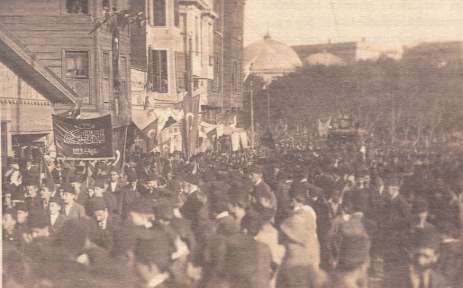
Meanwhile, the Sublime Porte displayed profound negligence. Ottoman politicians were deeply entangled in internal conflicts and misled by the false assurances of peace from the Russians and Bulgarians, rendering them oblivious to the realities unfolding in the Balkans. Two months after alliances were forged among Balkan States, Grand Vizier Sait Pasha made the following statements: "Our relations with the Balkan governments are very favourable... As a prudent statesman, Monsieur Venizelos is working for peace rather than war... The fact that a visionary person who appreciates our common relations like Monsieur Sazanov occupied the post of the Russian Foreign Minister is a sufficient guarantee for us to be in good terms with Russia." However, even after the Sait Pasha government was succeeded by the high-profile "Grand Cabinet" under Gazi Ahmet Muhtar Pasha, negligence persisted. The new Foreign Minister, Gabriel Norandunkian, asserted that he could assure the Parliament that the Balkan States had no intention of attacking the Ottoman Empire.
The Sublime Porte's negligence was evident in certain actions. While forming alliances with other Balkan states, Serbia purchased artillery guns from Germany. However, Austria-Hungary refused to permit the transportation of these guns through its territories. In a display of naivety, the Sait Pasha government agreed to transport the guns by sea to Salonica and then by train to Serbia. Gazi Ahmet Muhtar Pasha later realized the situation and revoked permission. Nevertheless, Serbia had acquired enough guns by then to use against the Ottoman Empire. Furthermore, in August 1912, the government disbanded 120,000 well-trained and experienced troops stationed in the Balkans, ostensibly to showcase peaceful intentions. Additionally, a contingent of 35 battalions from the Balkans was sent to Yemen to quell an uprising, further highlighting the Sublime Porte's lack of foresight.
During the summer of 1912, amidst a significant uprising in Albania, insurgent activities escalated in Macedonia with the intention of fabricating a pretext for engaging in war against the Ottoman Empire. The detonation of a bomb in the town of Kocana in Kosovo served as the catalyst. The explosion claimed the lives of 28 individuals, instigating retaliatory attacks by local Turks against Bulgarians, resulting in the death of 21 Bulgarians. This situation provided Bulgaria with grounds to register a protest against the Ottoman Empire. A parallel occurrence transpired in Greece when a bomb exploded on the island of Samos, eliciting a similar chain of events.
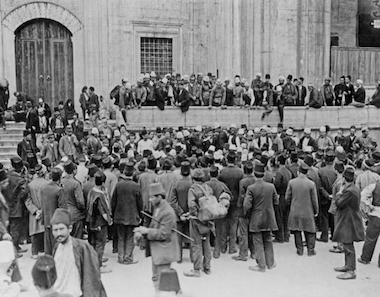
The Great Powers, with the exception of Russia, expressed reluctance towards a conflict that could potentially engulf Europe. France took the lead in advocating measures to avert the war, driven by the fact that over half of the Ottoman public debt at that juncture was owed to French capital. France stood to incur substantial losses in the event of a war. On 1 October 1912, President Raymond Poincaré declared the imperative to preserve the territorial integrity of the Ottoman Empire and maintain the status quo in the Balkans. He proposed that the Sublime Porte implement a reform package for the Balkans. While the government of Gazi Ahmet Muhtar Pasha wholeheartedly accepted this proposal, the Balkan states persisted in their mobilization efforts. Eventually, the Turks also decided to commence mobilization on a limited scale starting on 1 October 1912, with the intention of avoiding provocation towards the Balkan states and European powers.
The War Begins
Nevertheless, the Balkan states exhibited a pronounced willingness for war. On 8 October, Montenegro officially declared war against the Ottoman Empire, asserting that it perceived the demonstrations outside its embassy in Istanbul as a hostile act. Subsequently, the Great Powers, including Russia, issued an ultimatum to the four Balkan states and the Ottoman Empire on 10 October. The ultimatum conveyed their opposition to any actions disrupting peace, the expectation that the Ottoman Empire would implement the promised reforms, and a warning that if war persisted between the Balkan states and the Ottoman Empire, the Great Powers would not endorse alterations to the territorial status of the Ottoman Empire.
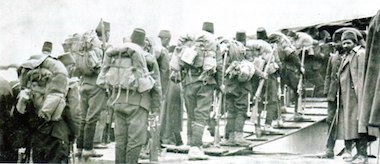
On 12 October, the governments of Serbia, Greece, and Bulgaria presented an ultimatum to the Sublime Porte, including demands they were aware could not be met. The Ottoman Empire declared war on the Balkan states on 16 October, prompting Bulgaria and Serbia to declare war on 17 October, with Greece following suit two days later.
"There exists no other European state capable of demonstrating the same degree of patience and tolerance as we do. The more reforms we undertake, the more aggressive and insolent the Balkan States become... Now war is upon us. Let there be war. We neither sought nor actively instigated its outbreak. Nevertheless, we shall engage in this conflict with unwavering strength and patriotism, even though history will not attribute its genesis to us. Should we venture into enemy territory, our conduct will mirror that of guests in a host's abode. If we face defeat, we shall confront it with dignity. From our side, there shall be neither bloodshed nor falsehoods." (Ottoman Foreign Minister Norandunkian)
In reality, the Ottoman Empire was ill-prepared for a Balkan conflict, preoccupied with the ongoing Italian issues in North Africa and the Aegean Sea. The state of the army itself was suboptimal, despite attempts, with the aid of German military experts, to reform the armed forces. However, tangible results necessitated time. A significant development was the enlistment of non-Muslim male subjects alongside Muslims, a departure from the historical norm.
Simultaneously, political upheaval gripped Istanbul. The Committee of Union and Progress had departed from the government in July 1912, and upon the outbreak of war, the Grand Cabinet led by Gazi Ahmet Muhtar Pasha also resigned. The subsequent government, under Kamil Pasha, was anti-Committee, mirroring its predecessor. However, the army remained significantly influenced by the Committee, leading to profound conflicts between the government and the military.
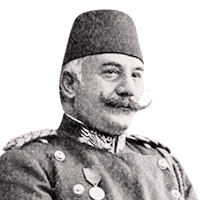
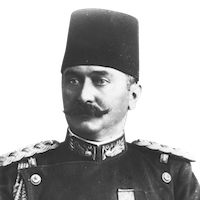
As hostilities commenced, Minister of War Nazım Pasha assumed command of the Ottoman army forces on behalf of the Sultan. The armed forces designated to engage in the Balkans were organized into two major armies: the Eastern Army (or Thrace Army) tasked with confronting the Bulgarians, and the Western Army (or Macedonia Army) assigned to face the Serbs. The Eastern Army, under the command of Abdullah Pasha, comprised four army corps and a cavalry division, slated to deploy along the line between Didymoteicho and Kırk Kilise (modern-day Kırklareli). Mahmut Muhtar Pasha, who had relinquished his post as Minister of the Navy, led the III Corps stationed at Kırk Kilise, while Şükrü Pasha defended the city of Edirne (formerly Adrianople) with the IV Corps positioned west of Edirne, under the command of Abuk Ahmet Pasha.
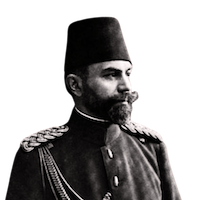
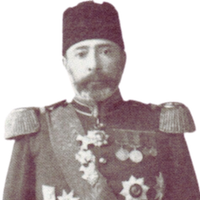
The Western Army, headquartered in Salonica and under the command of Ali Rıza Pasha, consisted of three groups designated for the Serbo-Bulgarian border, the Montenegrin front, and the Epirus and Thessaly fronts. However, at the outbreak of the war, the Ottoman army had not completed its mobilization. The Eastern Army, with approximately 115,000 men, fell significantly short of its normal wartime strength of 478,850, while the Western Army, numbering 188,000 men, was below its expected strength of 418,900. In essence, the Ottoman army entered the war with a force of approximately 300,000, pitted against the combined Balkan forces numbering around 610,000.
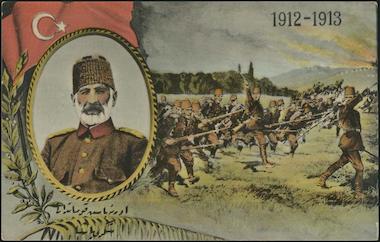
Notably, at this early stage, certain German officers stationed in Istanbul expressed their desire to participate in the conflict. Nazım Pasha, however, was disinclined to involve the Germans, a sentiment shared by the German Foreign Ministry. A compromise was reached, resulting in five officers, including Major Otto Stephan Hermann von Lossow and Major Gustav von Hochwächter, being naturalized as Ottoman citizens and joining the Ottoman army.
On 19 October 1912, Bulgarian forces breached the Ottoman border, advancing towards Edirne. General Nikola Ivanov, leading the Bulgarian Second Army, swiftly neutralized the feeble Ottoman border units, subsequently besieging Şükrü Pasha’s forces in Edirne from the north and west. Concurrently, General Vasil Kutinchev's Bulgarian First Army crossed the border, engaging Ottoman forces, while the Third Army under General Radko Dimitriev initiated its march towards Kırk Kilise.
Panic at Kırk Kilise
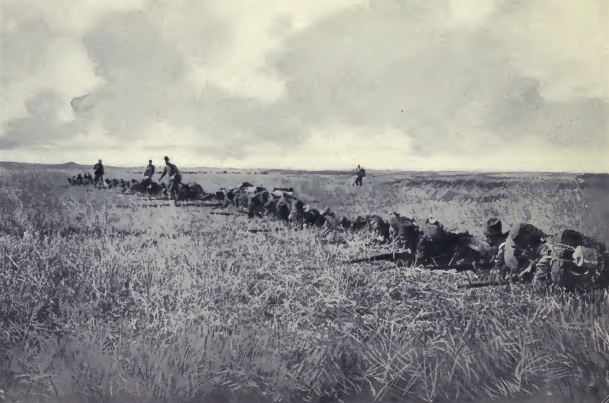
Abdullah Pasha, the commander of the Ottoman Eastern Army, expressed reluctance towards initiating a counter-offensive; nevertheless, he found himself compelled to launch an attack upon receiving a communication from the Minister of War, Nazım Pasha, during the late hours of 20 October. Commencing on 22 October, the Ottoman offensive targeted the Bulgarian positions situated between Edirne and Kırk Kilise. The ensuing engagement between the Ottoman Eastern Army and the Bulgarian First Army, commonly referred to as the Battle of Kırk Kilise, unfolded southwest of the town. After two days of skirmishes, panic ensued among the soldiers of Mahmut Muhtar Pasha’s III Corps, leading them to prematurely retreat from the battlefield, under the mistaken belief of impending defeat, even though the overall situation remained inconclusive.
Kırk Kilise witnessed utter chaos as Bulgarian forces, anticipating a Turkish assault that failed to materialize, dispatched scouts to investigate. By this point, Turkish troops and the city's inhabitants had already evacuated, leaving only the Christian population, who greeted the Bulgarian occupation with open arms. The Battle of Kırk Kilise delivered a significant blow to the Ottoman forces and marked an uncomplicated triumph for the Bulgarians.
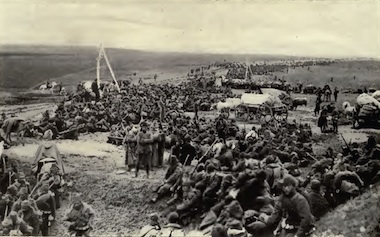
"I posit that culpability rests with those responsible for thrusting the Turkish soldiers to the forefront amidst these adverse circumstances. Consideration should be given to the morale of Anatolian peasants accustomed to warmer climates, who find themselves traversing unfamiliar territories in conditions of hunger and thirst, lacking clarity regarding the purpose of their engagement in warfare and unacquainted with the operation of the rifles handed to them. Abandoned and left to their own devices, they proceed with uncertainty, traversing muddy terrain in rudimentary footwear. Following a night exposed to the cold elements without shelter, they return to the front with the break of dawn. The individual reflects upon the pitiable condition of the wounded witnessed the previous day, grappling with internal sensations of fear and impending mortality. He turns away, and others subsequently emulate his retreat. The retreat evolves from a state of initial confusion in the face of the calamity to an outright escape, a flight from the encroaching adversary. Thus begins the onset of a panic that obliterates all semblance of order. The thoroughfares appear interminable, indistinguishable in their lack of commencement or conclusion, impeding forward progress. Rivers surge beyond their banks, bridges succumb to collapse, villages succumb to conflagration, and enemy gunfire decimates the ranks. This mass exodus assumes a dreadful character, reducing man to an animalistic state. The entire horror and catastrophe of war manifests itself in this tumultuous spectacle." (Major Gustav von Hochwächter in his memoirs)
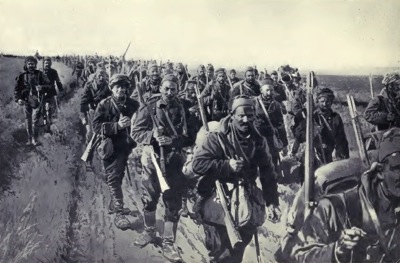
Benefiting from the Bulgarians' decision not to pursue the retreating Turks, Turkish commanders successfully halted the panicked withdrawal of their forces at Lüleburgaz on 25 October. Nevertheless, Abdullah Pasha remained indecisive and telegraphed Mahmut Muhtar Pasha, contending that engaging in combat under these circumstances was unfeasible, advocating for a political resolution to the Balkan issue. Although he proposed a retreat to Çorlu, Nazım Pasha, arriving at the front on 26 October, concurred with Abdullah Pasha. Nazım Pasha issued the directive to establish a defensive line at Lüleburgaz and transferred three army corps from Abdullah Pasha's command to Abuk Ahmet Pasha.
Concurrently, the Bulgarians heightened their reconnaissance efforts to locate the Turkish troops. On 25 October, they effortlessly seized the town of Babaeski. Subsequently advancing towards the Turkish positions, the First and Third Armies initiated an offensive against the Turkish defensive line starting on 29 October. Combat persisted for several days around Lüleburgaz, with the initially resilient Turkish troops that had retreated from Kırk Kilise demonstrating tenacity.
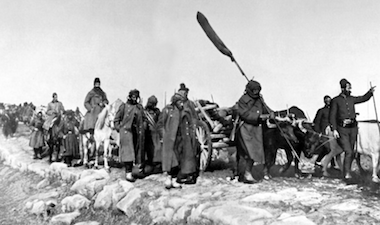
However, the fortunes for the Turks quickly reversed, leading to renewed panic as three corps sought to withdraw per Abdullah Pasha's orders. This development imperiled Hamdi Pasha's offensive to the north of Lüleburgaz as well. On 2 November, Nazım Pasha issued a comprehensive retreat to Çatalca, situated 30 kilometres west of the Ottoman capital, Istanbul. In adverse weather conditions, amid heavy rain, tens of thousands of soldiers and the Muslim population continued to flee from the advancing Bulgarian forces.
"On the roads, soldiers were fleeing back in total disorder. Infantrymen were collapsing on the mud, due to hunger and exhaustion, never to stand up again. The crying and begging of these desperate people who were drowning in the mud was piercing our ears and hearts... The villages on the road were filled with soldiers. It was such a view that nobody could believe that soldiers, who were fighting successfully for days, ended up in this situation. As it was the case in Kırk Kilise, we were again facing an army that was fleeing without even looking back. But why? This question was too difficult to answer." (Mahmut Muhtar Pasha in his diary)
The scenario remained unchanged on other fronts. The Serbs, who had crossed the border on 19 October, encountered the Vardar Army, a constituent unit under the Ottoman Western Army, three days later. Turkish forces, under the command of Halepli Zeki Pasha, were assembled around the town of Kumanovo in Macedonia. The VII Corps of Fethi Pasha was positioned on the left, the VI Corps of Cavid Pasha held the center, and the V Corps of Sait Pasha was situated on the right. On 23 October, Zeki Pasha initiated the Turkish offensive. Outnumbering the Serbs, Turkish troops swiftly began to inflict substantial damage on the First Army of the Serbs, commanded by Crown Prince Alexander.
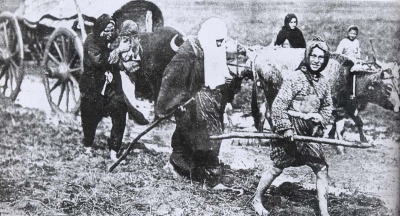
However, the situation took a turn when Serbian artillery guns arrived at the front. Within half a day, the Vardar Army lost its momentum and commenced a retreat. The Ottoman strategy for an offensive war had faltered, compelling the Vardar Army to relinquish significant territory and suffer considerable artillery losses. This setback was exacerbated by the inability to reinforce, as supply routes from Anatolia were severed. The Vardar Army was also incapable of organizing a defense along the Vardar River and was obliged to abandon Skopje, which the Serbian army occupied on 26 October. Following the capture of Kumanovo, the Serbs advanced towards Monastir (present-day Bitola), where Zeki Pasha's forces had retreated. Simultaneously, the Montenegrin army seized the town of Tozi and attempted to besiege Shkoder.
Greece fielded two armies during this historical period. The larger Thessaly Army, commanded by Crown Prince Constantine, was stationed in the east, while the smaller Epirus Army, under the command of General Konstantinos Sapountzakis, was positioned in the west. On the Ottoman side, the defence of the Salonica region fell under the purview of the VIII Corps, led by Hasan Tahsin Pasha, while the responsibility for defending Ioannina rested with Esat Pasha's Ioannina Corps.
Salonica Falls
The Greek offensive commenced on 18 October, with the Thessaly Army engaging the Ottoman VIII Corps in a significant battle around the town of Sarantoporo three days later. Following a day of intense fighting, Hasan Tahsin Pasha ordered a strategic retreat towards Salonica to avert encirclement. Subsequently, on 1-2 November, the Greek forces once again prevailed over the Turks, this time near the Lake of Giannitsa, advancing closer to Salonica.
As Greek forces closed in, Salonica faced imminent peril. Simultaneously, while hostilities unfolded in Giannitsa, the deposed ex-Sultan, Abdülhamit II, in exile, was relocated from Salonica to Istanbul for his safety. Concurrently, Greek naval support was provided to the Thessaly Army from the sea. Troops were landed on the shores east of Salonica on 5 November, and on the same day, a Greek destroyer sank the Ottoman warship Feth-i Bülent, anchored at the port of Salonica. The town not only found itself blockaded but was also subjected to shelling by Greek warships, including the Averof, targeting the Turkish fortifications.
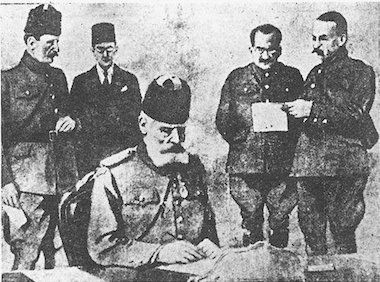
The entreaty from Nazım Bey, the Governor of Salonica, implored Hasan Tahsin Pasha to refrain from engaging in hostilities within the suburbs. The purpose of this plea was to safeguard the city and its denizens from potential harm. The Turkish commander, facing dire circumstances, commanded a mere 25,000 troops, encircled by an overwhelming force of over 100,000 Greeks and Bulgarians. Contemplating the notion that surrender might be a more prudent course than engaging in fruitless bloodshed, Hasan Tahsin Pasha negotiated an armistice with Crown Prince Constantine. Consequently, on 9 November, the Thessaly Army peacefully occupied the city without encountering resistance. Subsequently, 1,000 Turkish officers, including Hasan Tahsin himself, along with 25,000 soldiers, were taken captive, and 70 artillery guns were seized. Two days later, amidst the jubilation of the local Christian populace, King George I of Greece entered Salonica. Simultaneously, the Struma Corps, under the command of Ali Nadir Pasha, tasked with impeding the advance of Serbian forces to the Aegean shores, capitulated.
As the Greek forces continued their advance, they posed a significant threat to the Vardar Army engaged in combat against the Serbs in the north. This perilous situation emerged because the road to Monastir was left vulnerable by the Ottoman VIII Corps, which had shifted its focus to Salonica. Crown Prince Constantine faced a strategic decision – whether to advance towards Monastir or Salonica. Opting for the latter, he recognized the imperative of securing his exposed flank, prompting the deployment of the 5th Division of the Thessaly Army to Monastir. Confronted with this impending threat, Ali Rıza Pasha, the commander of the Ottoman Western army, resolved to task the VI Corps of Cavid Pasha with engaging the approaching Greek forces.
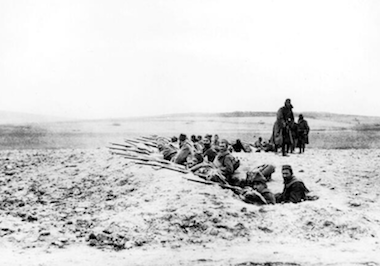
On 6-7 November, the VI Corps achieved victory over the Greek 5th Division at Sorovits, situated midway between Salonica and Monastir. However, during the absence of the VI Corps, the Vardar Army suffered defeat in the Battle of Prilepe against the Serbs, leading to the recall of Cavid Pasha’s forces to bolster the Turkish efforts against the advancing Serbs near Monastir.
On 14 November, General Bozidar Jankovic's Serbian Third Army confronted Turkish forces to the north of Monastir. The Battle of Monastir persisted for four days. On the final day, Cavid Pasha’s VI Corps successfully repelled the Serbs in an offensive maneuver. The front was breached in the VII Corps sector, as the Serbs exploited a gap caused by the irresponsible withdrawal of a reserve regiment during the rainy night. On the night of 18 November, Zeki Pasha ordered a retreat. Resne fell on 20 November, followed by Ohrid the next day. The Battle of Monastir marked the conclusion of the Ottoman Western Army's major operations in the region, signifying the end of the five-century-long Ottoman rule over Macedonia.
The Balkan territories were lost within a mere month. Despite the Ottoman army being undermanned and in suboptimal condition before the war, the swift collapse took everyone by surprise. A heated debate ensued in Istanbul regarding the reasons behind this rapid deterioration. Nazım Pasha faced criticism for inaccurately assessing the true strength of the army, disregarding pre-existing war plans, and opting for an offensive strategy over a defensive one. The Foreign Ministry was reproached for not timely recognizing Balkan alliances, while Grand Vizier Gazi Ahmet Muhtar Pasha received criticism for disbanding tens of thousands of troops just before hostilities commenced. According to critics, assigning an overly extensive and border-proximate area to the Eastern Army was a mistake, as was deploying the Western Army disorderly across a wide region.
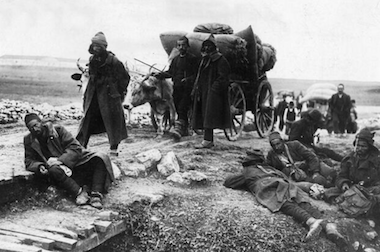
These challenges were by no means the sole impediments encountered. Profound deficiencies were evident in the realms of logistics, communication, and intelligence. Mahmut Muhtar Pasha, in his subsequent memoirs, asserted that the Ottoman strategies were not the primary issue; rather, the defeat stemmed from the inadequacies within the military organization, insufficient pre-war preparations, and the pervasive societal, political, and moral decay afflicting the Empire.
Another contributing factor to the Balkan setback, as articulated by Mahmut Muhtar Pasha himself, lay in the inability to restore confidence between officers and troops following the 31 March incident, which had left the army highly politicized. Lower-ranking officers tended to sympathize with the Committee of Union and Progress, while their higher-ranking counterparts and generals were largely opposed to the Committee. Consequently, younger officers frequently disobeyed orders and pursued independent courses of action.
Meanwhile, the conflict was far from concluded. Although the Balkan territories had been lost, the capital now faced imminent peril. A mere eight days after the defeat in Lüleburgaz, the Turkish forces regrouped along the Çatalca line, spanning 30 kilometres. The troops confronted dire conditions of starvation and thirst, resorting to consuming whatever water was available. In early November, a cholera outbreak afflicted the Ottoman III Corps in Çatalca. On November 15, 1912 alone, a staggering 2,786 men fell ill, with 817 succumbing to cholera. These figures surged in the ensuing days. The afflicted, along with the wounded and refugees fleeing the Bulgarian advance, were transported to Istanbul. In a matter of days, 50,000 individuals entered the city, catalyzing the spread of the cholera epidemic.
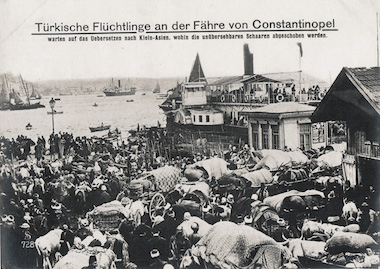
Istanbul not only grappled with the ravages of disease but also harboured fear among its inhabitants due to the Bulgarian advance.
"The heightened anxiety among the denizens stemmed from reports conveyed to Istanbul by the wounded and refugees. Trains arriving from theatres of war were replete with casualties and individuals fleeing towns and villages under enemy occupation. The routes connecting Istanbul to Çatalca teemed with villagers escaping with laden oxcarts, transporting women, children, livestock, and whatever possessions they could salvage. Notably, a considerable influx of fugitive soldiers was converging upon Istanbul. Conversely, the atmosphere in Pera remained seemingly impervious to the conflict, with Greeks and Armenians comporting themselves as if the war bore no relevance to their concerns. The quotidian life in the streets of Pera manifested no discernible impact from the proximate war, the sole predicament being the scarcity of phaetons due to the government's requisition of all available horses in the city." (Wilhelm Feldmann, a German journalist stationed in Istanbul)
On 12 November, the Sublime Porte petitioned the Bulgarian government for an armistice, only to encounter rejection. Three days hence, General Mihail Savov, the commander-in-chief of the Bulgarian Army, arrived in Çatalca to survey the front alongside General Dimitriev. Despite encountering analogous challenges as the Turks, Savov and Dimitriev contemplated an offensive manoeuvre owing to their proximity to Istanbul, reluctant to forego the prospect of seizing the Ottoman capital. After conferring with Tsar Ferdinand, General Savov issued the directive for the attack. Simultaneously, Nazım Pasha had relieved Abdullah Pasha of command and assumed leadership of the Eastern Army himself.
The Bulgarian offensive at Çatalca commenced in the early hours of 17 November, marked by an intense barrage of artillery. In response, Turkish artillery promptly returned fire. At approximately 9 am on the same day, the Bulgarian infantry initiated their advance. On the left flank, the I Corps, under the command of Ömer Yaver Pasha, adeptly defended its positions against the Bulgarian forces. This successful defense was reinforced by naval artillery support from Turkish warships in both the Sea of Marmara and the Bay of Büyük Çekmece, notably the involvement of Barbaros Hayreddin. Faced with staunch resistance, the Bulgarians were compelled to retreat.
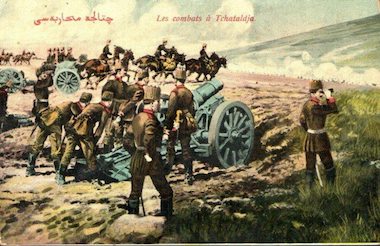
In the central sector, Hamdi Pasha’s II Corps also managed to repel the Bulgarian forces. Simultaneously, on the right flank held by the III Corps under Mahmut Muhtar Pasha, intense bayonet charges persisted throughout the day. Ultimately, the Bulgarians were forced to withdraw from this sector as well.
During the night spanning 17 to 18 November, the Bulgarian 29th Infantry Regiment executed a surprise bayonet charge, successfully capturing one of the Turkish positions. However, due to adverse weather conditions characterized by fog and poor visibility, neither the Turkish nor the Bulgarian forces were immediately aware of the situation. In the morning, during an inspection of the area, Mahmut Muhtar Pasha was wounded by a Bulgarian bullet. The Turkish troops accompanying him realized that the position had been captured by the enemy and managed to reclaim it before Bulgarian reinforcements could arrive.
Armistice
By 22 November, Ottoman forces in Çatalca had decisively repelled the Bulgarians. This victory proved to be a significant morale boost for the Turks; nevertheless, both belligerents found themselves in a state of exhaustion, disinclined to prolong hostilities. Apprehensive about the potential expansion of the conflict across Europe, Britain and France seized the initiative to propose an armistice. The accord was ultimately ratified on 3 December 1912 in Çatalca, with delegations from the Ottoman Empire, Serbia, and Bulgaria in attendance.
In a noteworthy development, Greece, dissatisfied with the stipulations and adamant about the evacuation of Ioannina, refused to endorse the armistice. Consequently, Greece persisted in its siege of Ioannina and maintained blockades in the Aegean and Adriatic Seas.
Per the armistice terms, Ottoman units were to maintain their positions as of 3 December, with a prohibition on sending relief supplies to the three besieged cities. Additionally, to facilitate the resupplying of Bulgarian forces in Çatalca, the Ottoman government was obligated to lift the blockade on Bulgarian Black Sea ports and permit the Bulgarians to utilize the railway passing through Edirne for this purpose.
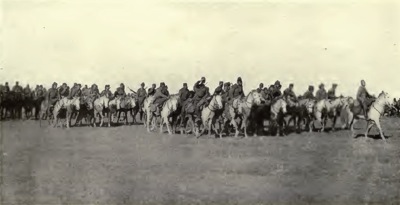
Following the armistice, a peace conference was convened in London, attended by delegates from the Balkan allies, including Greece, which had not ratified the preceding armistice, and representatives from the Ottoman Empire. The conference commenced on 16 December 1912. Simultaneously, a Conference of Ambassadors, comprising Sir Edward Grey, the British Foreign Secretary, and representatives from all participating powers based in London, was also in session. Mustafa Reşid Pasha, the Minister of Public Works, led the Ottoman delegation.
The Balkan allies asserted claims for a war indemnity and the relinquishment of all European territories held by the Ottoman Empire, excluding Albania. Additionally, Crete and the islands in the Aegean Sea were to be ceded. The Ottoman Empire was permitted to retain control of Istanbul and Constantinople, along with a corridor of land extending from Midia on the Black Sea to Rodosto (present-day Tekirdağ) on the Sea of Marmara, as well as the Gallipoli Peninsula.
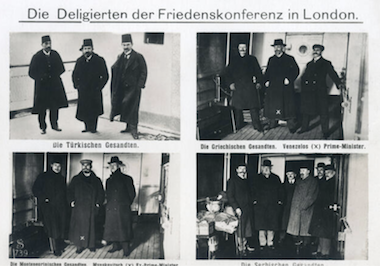
The Sublime Porte exhibited a reluctance to relinquish Edirne, a concession vehemently demanded by Bulgaria. Representatives of the major Powers articulated that should the conference falter on account of the Edirne matter, Armenians were poised to foment unrest in Anatolia. Additionally, there existed a potential scenario wherein the Great Powers might deploy a fleet to Istanbul, and Russia could dispatch troops to Kars.
Concurrently, amid the ongoing negotiations in London, Captain Rauf Bey, commanding the cruiser Hamidiye, undertook a personal initiative by navigating his warship to the Aegean, aiming to undermine the Greek blockade and influence the prevailing sentiment in the nation. Despite successfully breaching the blockade, Rauf Bey's plan to entice the Greek flagship Averof into pursuit, leaving the rest of the Greek fleet vulnerable, proved unsuccessful. Averof did not pursue Hamidiye; nevertheless, Hamidiye achieved several victories, sinking multiple Greek vessels and bombarding Greek ports.
In London, on 28 December, the Ottoman delegation presented its proposal. According to this proposal, Edirne would persist within the Empire, and Macedonia would evolve into a principate under Ottoman tutelage, designating Salonica as its capital. The prince would be appointed by the Ottoman sultan from candidates proposed by the Balkan states. Albania would enjoy autonomous status under the rule of an Ottoman crown prince. The Aegean islands would retain their Ottoman status, while the matter of Crete would be subject to separate deliberations between the Sublime Porte and the Great Powers.
Deadlock in London
The Ottoman proposal was rejected, leading to a deadlock in negotiations in London, primarily due to Bulgaria's insistence on acquiring Edirne and the islands of Thassos and Samothrace, while Greece sought Imbros (modern-day Gökçeada), Tenedos (modern-day Bozcaada), and Limnos. The Ottoman delegation contended that Edirne and the four islands, excluding Thassos, were vital for the defense of Istanbul and the Straits, deeming them indispensable.

On 17 January, the Great Powers presented a revised proposal to the Ottoman delegation. According to this proposal, Edirne was to be ceded, along with all European territories of the Empire situated beyond a line extending from Enos on the Aegean Sea, at the mouth of the Maritza River, to Midia on the Black Sea. Five days later, the Sublime Porte convened an imperial council, attended by current and former statesmen, to deliberate on this proposition. Recognizing no advantages in continuing the war, the council unanimously concurred that peace should be pursued on the terms set forth by the Great Powers.
The subsequent day, the Ottoman government convened to finalize its response to be submitted to London. Concurrently, unrest manifested within specific circles, particularly those affiliated with the Committee of Union and Progress. As the government meeting progressed, on 23 January 1913, a faction of Committee sympathizers, led by the distinguished orator Ömer Naci Bey, marched towards Bab-ı Ali (Turkish term for the Sublime Porte), protesting the government's intention to relinquish Edirne to the enemy. Upon reaching their destination, they encountered a group of armed officers, including Enver Bey, Yakup Cemil, Necip Asım, and Sapancalı Hakkı. Together, they forcibly entered the hall where the meeting was underway, marking a coup d'état.
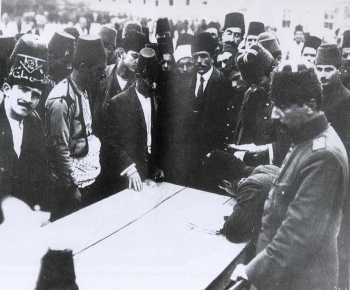
During the "Raid on the Sublime Porte", a number of individuals, including the Minister of War, Nazım Pasha, were assassinated by the coup plotters, compelling Grand Vizier Kamil Pasha to resign under duress. Although the incident was initially portrayed to the public as a response to the government's intentions concerning Edirne, it was, in fact, a premeditated event orchestrated by the Committee of Union and Progress to reclaim political authority. Mahmut Şevket Pasha, who had recently departed from the government due to the Committee's pressure, was appointed as the new Grand Vizier.
As the newly formed government insisted on retaining Edirne, compelled by the necessity to justify the coup, Bulgaria officially declared on 2 February that the armistice was terminated. However, the circumstances had evolved since three months prior. Amid ongoing negotiations in London, the Turks had fortified their defensive positions at Çatalca, making it nearly impracticable for the Bulgarians to breach. A second front at Bulair, north of the Gallipoli peninsula, had also been bolstered. The combined Turkish forces at these two fronts amounted to 200,000 men, outnumbering the 150,000 Bulgarian troops. Concurrently, the Bulgarian First and Third Armies were stationed at Çatalca, while the Second Army maintained its siege at Edirne. A new army, the Fourth, commanded by General Stilian Kovachev, was established for the Gallipoli front.
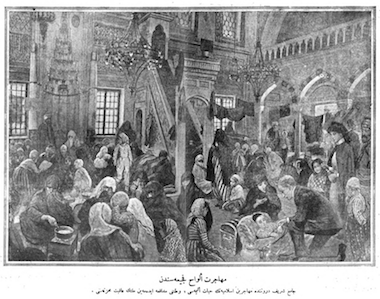
Mahmut Şevket Pasha, alongside the newly appointed commander-in-chief of the Ottoman forces, Ahmet İzzet Pasha, promptly initiated preparations for the resumption of hostilities. The precarious nature of the situation stemmed from the uncertain duration of Edirne's endurance. The city found itself besieged, grappling with dwindling supplies, and facing mounting public pressure for the liberation of the former imperial capital.
The inaugural maneuver in this phase of the conflict unfolded in the early hours of 8 February 1913. Under the command of Hurşid Pasha, with Enver Bey as his chief of staff, the X Corps executed an amphibious landing at the shores of İnceburun and Şarköy on the Sea of Marmara. The strategic intent was to encircle the Bulgarian Fourth Army, employing the X Corps from the east and the Dardanelles Combined Corps in Gallipoli, led by Fahri Pasha. Major Fethi Bey served as his chief of staff, and Major Mustafa Kemal Bey assumed the role of head of operations, operating from the south. The warship Mesudiye was designated to provide naval artillery fire support from the sea, paving the way for a joint advance towards Edirne.
Regrettably, the execution of the operation did not unfold as planned. The landings, initially scheduled for the morning of 8 February, suffered delays. The Dardanelles Combined Corps, intended to initiate its offensive concurrently with the landings, acted prematurely due to a lack of communication regarding the delay. Compounded by the decision to utilize warship Mecidiye for the landings, with the unfortunate loss of Asar-ı Tevfik off Karaburun, there was a conspicuous absence of naval fire support. Fahri Pasha's corps proved inadequate to confront the Bulgarians in isolation, exacerbated by both delayed landings and the inadvertent deployment of four regiments to Şarköy instead of İnceburun, the latter being closer to the Bulair frontline. By the following morning, half of the X Corps had disembarked, but it proved too little, too late. The operation was compelled to abort.
Losing Ioannina, Edirne and Shkoder
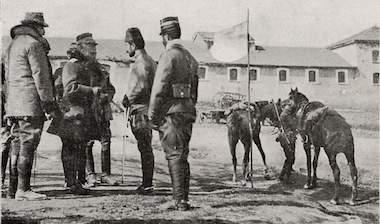
Meanwhile, following the repulsion of Esat Pasha's forces in Epirus, the Greeks initiated a siege on the city of Ioannina, held by Colonel Vehib Bey, Esat's brother. The Epirus Army endeavoured to capture the city through a significant offensive but failed, incurring substantial losses. General Sapountzakis bore the consequences of this setback and was subsequently replaced by Crown Prince Constantine. Although fresh Greek troops landed on the Dalmatian shores, they encountered resistance from the Albanian militia, halting their advance.
The siege of Ioannina, while robust, did not parallel the intensity of the Bulgarian siege of Edirne. Vehib Bey's forces effectively defended the city, facing no shortages of supplies. Surprisingly, Vehib Bey chose to surrender. Ottoman forces and the Albanian militia relinquished control of the city to Constantine on 6 March.
The rationale behind this unexpected surrender was later disclosed in a letter from the German ambassador in Athens to Berlin. According to the information received, the Sublime Porte intended to exploit the discord between Bulgarians and Greeks to navigate the war with minimal losses. Vehib Bey, acting on orders from the Ottoman government, evacuated the city to foster goodwill with Greece and encourage a joint alliance against Bulgaria.
On 17 March, the Turks attempted another offensive at Çatalca, but it proved futile. Neither side displayed a willingness to engage in combat. The Bulgarians, anticipating the capture of Edirne, preferred to await the resolution of events before pressing the Çatalca line.
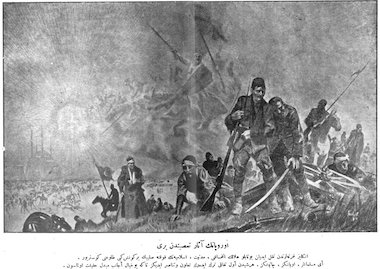
What was feared by the Turks, was to materialize soon. A Serbian contingent arrived in Edirne to reinforce the Bulgarians' siege. The participating units included the Serbian Second Army under the command of General Stepa Stepanović, accompanied by French Creusot artillery dispatched due to the Bulgarians' deficiency in heavy artillery. General Nikola Ivanov held the overall command of the Bulgarian forces, with General Georgi Vazov overseeing the eastern sector of the fortress.
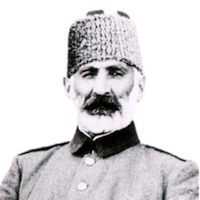
Hostilities surrounding Edirne commenced on 3 February, marked by the Bulgarian Second Army initiating artillery fire. Despite Şükrü Pasha's heroic defense of the city, the combined strength of the Bulgarian and Serbian forces in the final offensive on March 24 proved overwhelming. Edirne succumbed on 26 March 1913, concluding a siege lasting 155 days. During this period, the Turks incurred losses of 13,000 men killed or wounded, with an additional 28,500 taken prisoner. In contrast, the Bulgarians suffered 16,000 casualties, while the Serbs recorded 1,900 men lost. The following day, Tsar Ferdinand entered Edirne, returning Şükrü Pasha's sword, which had been seized by Ivanov the day prior. All Turkish officers, including Şükrü Pasha himself, were relocated to Sofia, while the Turkish prisoners of war remained in the city for an additional month before being transferred to prisoner camps in Bulgaria.
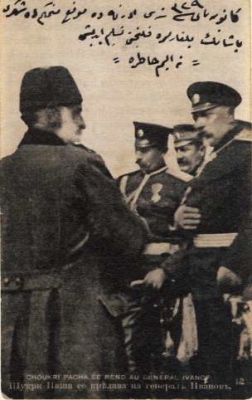
The only city that remained under siege was Shkoder, staunchly defended by Colonel Hasan Rıza Bey. Despite his steadfast resistance spanning seven months, Shkoder's inevitable demise loomed. On 30 January 1913, Hasan Rıza sought an audience with the archbishop of Albanian Catholics. Upon his return home that evening, he fell victim to a ruthless assault by three assailants, succumbing to the sustained injuries inflicted. Subsequent to his demise, the mantle of Shkoder's defense was assumed by Esat Toptani Pasha, an Albanian feudal lord who had garnered favour from Abdülhamid II. Hasan Rıza Bey, in a bid to secure the support of Muslim Albanians, had appointed him as the commander of the fortified zone in Shkoder.
Meanwhile, an armistice was brokered between Bulgaria and the Ottoman Empire on 4 April. The Great Powers, intent on resolving the situation in Shkoder, commenced exerting pressure on Montenegro to lift its siege. An Allied fleet, commanded by British Admiral Burney, anchored off the Montenegrin coast to intensify this pressure. However, just as King Nikola was preparing to lift the siege, an unexpected turn of events transpired. On 22 April, Esat Toptani capitulated, surrendering the city to the Montenegrins in exchange for safe passage for Ottoman troops and the Muslim populace. This act of surrender not only irked the Sublime Porte but also drew condemnation from the Great Powers.
According to reports from the German ambassador in Cetinje and the Austrian military attaché in Paris, Russia had played a role in encouraging the accord between Esat Toptani and King Nikola. Nikola had pledged to bestow upon Esat Toptani the title of King of Albania and had also secured Russian financial assistance. Following a series of diplomatic endeavours, Shkoder was eventually handed over to international forces on 8 May.
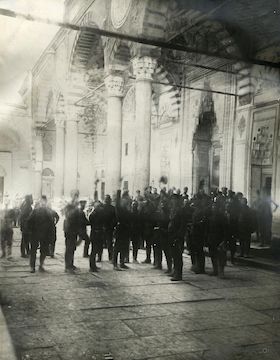
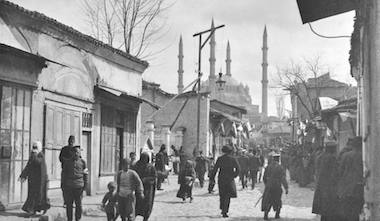
In the interim, Romania posed an additional query, aspiring to acquire Silistria and a strategically more advantageous military frontier for its Dobrudja region. Bulgaria rebuffed these proposals as compensation for maintaining neutrality. The brink of war loomed, yet a crisis was averted through a conference in Petrograd on 7 May, wherein Romania was granted Silistria sans fortifications.
The culmination of the Balkan War materialized with the signing of the Treaty of London at St. James's Palace on 30 May 1913. Consequently: (1) The Ottoman Empire relinquished its European territories beyond a delineated line from Enos, situated near the mouth of the Maritza River on the Aegean Sea, to Midia on the Black Sea, in favor of the Balkan allies; (2) The determination of the status and boundaries of Albania was entrusted to the Great Powers; (3) Ottoman Empire ceded Crete to the Balkan allies in whose favour all rights of sovereignty were renounced; (4) The fate of the islands in the Aegean Sea (excluding Crete) and the status of Mount Athos were deferred to the discretion of the Great Powers.
Intra-Balkan Conflict
During the Balkan War, Serbia, Montenegro, Greece, and Bulgaria successfully annexed the European territories of the Ottoman Empire, leaving the Ottoman Empire with only Çatalca and the Gallipoli peninsula. Nevertheless, the Balkan states found themselves dissatisfied. No prior agreement had been reached concerning the post-war division of the former Ottoman territories, and the London Conference merely acknowledged the existing status quo. The most profound disappointment was felt in Sofia, where Bulgaria perceived its territorial gains, particularly in Macedonia, as inadequate and pressed its claim to the city of Salonica. Meanwhile, Greece and Serbia remained unwilling to relinquish their respective claims on Macedonia. Simultaneously, Romania, not involved in the war, sought to exploit discord among the Balkan states to secure advantages in Dobrudja.
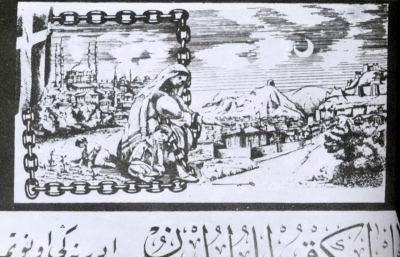
Recognizing the renewed tensions in the Balkans, Russian Tsar Nicholas II endeavored to intervene, albeit too late. Bulgaria aspired to encompass the entirety of Bulgarian Macedonia, establishing Bulgarian dominance in the Balkans, while Serbia and Greece sought larger portions of Macedonia to counteract Bulgarian hegemony. On 30 June 1913, Bulgarian Tsar Ferdinand issued orders for his troops to engage Serbian and Greek positions, marking the commencement of the Second Balkan War.
The Bulgarian strategy aimed to swiftly overcome the Serbs and Greeks before potential intervention from Russia or Turkey, followed by a northward advance towards Romania. However, this plan did not materialize as rapidly as desired. Tsar Ferdinand relieved General Savov of his command, appointing General Dimitriev as the new commander-in-chief amidst a political upheaval in Sofia. The Bulgarian government opposed war, while the Tsar favoured it, resulting in conflicting orders for the army. Compounding the challenges for Bulgaria, Romania declared war on 10 July. With engagements on three different fronts, the Bulgarian army became divided, culminating in a comprehensive disaster within a mere three weeks.
Liberation of Edirne
Meanwhile, the discord among the victors of the initial conflict presented a significant opportunity for the Ottoman Empire to reclaim some of the previously lost territories. Grand Vizier Mahmut Şevket Pasha met his demise through assassination on 11 June, and his position was assumed by the conservative Sait Halim Pasha, aligning with Unionist principles. With the Committee of Union and Progress now firmly in control in Istanbul, they sought a military triumph to solidify their ascendancy. Consequently, on 6 July, the Sublime Porte decided for the army to advance towards the Enos-Midia line, which was traversed by an army of approximately 200,000 troops on 12 July.
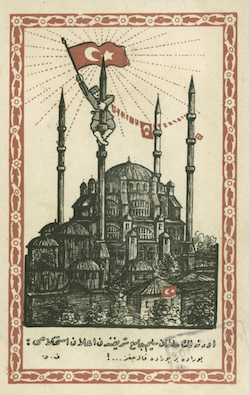
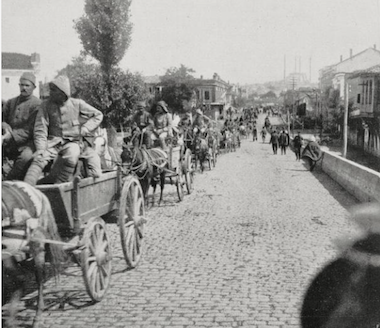
On 22 July, the Ottoman forces peacefully entered Edirne without a single shot being fired. The initial contingent to enter the city was led by Enver Bey, who famously declared, "We are here, and we will stay here."
The liberation of Edirne not only bolstered the morale of the Ottoman army but also had a profound impact on the entire nation. Simultaneously, the Great Powers promptly voiced their objections to the liberation of Edirne, citing violations of the provisions of the London Treaty. Nevertheless, the prevailing optimism in Istanbul rendered these protests and Russian threats to dispatch a fleet to Istanbul and invade Eastern Anatolia ineffectual. Meanwhile, Romanian troops had seized Southern Dobrudja and were advancing through Northern Bulgaria, with the aim of posing a threat to Sofia.
 Following a series of diplomatic initiatives involving the Great Powers and the Balkan states, the Second Balkan War concluded with the signing of the Treaty of Bucharest on 12 August 1913. Romania emerged as the principal beneficiary in proportion to its losses, acquiring the entire Southern Dobrudja region from Bulgaria, as well as Silistria and Turtucaia south of the Danube. Bulgaria, unable to secure Macedonia and possessing only a limited outlet to the Aegean via the minor port of Dedeağaç (modern-day Alexandroupoli), had to abandon its aspirations of Balkan hegemony. Greece retained Salonica and was additionally granted control over the port of Kavala and the adjoining territory eastward.
Following a series of diplomatic initiatives involving the Great Powers and the Balkan states, the Second Balkan War concluded with the signing of the Treaty of Bucharest on 12 August 1913. Romania emerged as the principal beneficiary in proportion to its losses, acquiring the entire Southern Dobrudja region from Bulgaria, as well as Silistria and Turtucaia south of the Danube. Bulgaria, unable to secure Macedonia and possessing only a limited outlet to the Aegean via the minor port of Dedeağaç (modern-day Alexandroupoli), had to abandon its aspirations of Balkan hegemony. Greece retained Salonica and was additionally granted control over the port of Kavala and the adjoining territory eastward.

A consequential outcome of the Second Balkan War manifested in the establishment of the Provisional Government of Western Thrace on 31 August 1913. This political entity emerged through a Turkish and Pomak (Muslim Bulgarian) rebellion led by Kuşçubaşı Eşref Bey, which opposed the withdrawing Bulgarian forces in the region. The ephemeral republic was instituted with Gümülcine (modern-day Komotini) as its capital, complete with an autonomous state bureaucracy and military apparatus. Nevertheless, following the conclusion of the Treaty of Istanbul, the republic was dissolved, and its territory was ceded to Bulgaria.
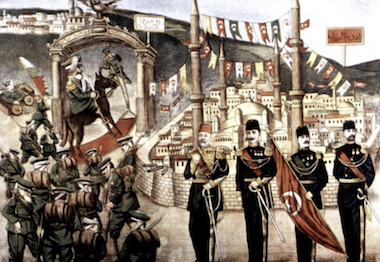
The Ottoman Empire engaged in three peace treaties with the Balkan states. The initial accord, the Treaty of Istanbul, was inked with Bulgaria on 29 September 1913. According to its provisions, the Enos-Midia line was maintained but modified to incline northward from the Black Sea and westward across the River Maritza. Consequently, the Ottoman Empire acquired not only Edirne but also Kırk Kilise and Didymoteicho. Additionally, the treaty granted the Muslim populace within Bulgaria's borders the option to migrate to Ottoman territories within four years, while those opting to remain were afforded freedom of worship. Subsequently, the Treaty of Athens, signed on 14 November 1913, bestowed Ioannina, Crete, and Salonica upon Greece, yet left the matter of the Aegean islands unresolved. A further treaty, concluded with Serbia in Istanbul on 13 March 1914, pertained solely to the status of the Muslim population in Serbia, given the absence of a shared frontier between the Ottoman Empire and Serbia.
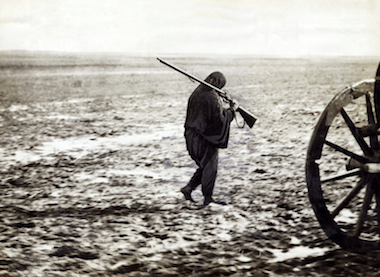
During the Balkan Wars, the Ottoman military incurred approximately 250,000 casualties, encompassing fatalities in combat, injuries, and those deemed missing in action. The empire, having forfeited 83 percent of its European territories, which held considerable economic significance, and experienced a 69 percent reduction in the European-dwelling population, ceased to maintain its "European" identity. Conversely, Bulgaria expanded its territorial holdings by 29 percent, Greece by 68 percent, Montenegro by 62 percent, and Romania by 5 percent.
The most significant toll of the Balkan Wars was exacted upon the civilian populace. Compelled to migrate, they were compelled to flee the encroaching armies and marauding groups, resulting in loss of life and property. The strategies employed by Russia during the Turco-Russian War of 1878 to depopulate the Balkan Peninsula of its Muslim inhabitants were replicated by Bulgarian, Serbian, and Greek bands during this conflict. Concurrent with the confrontations between regular armies at the front, the Muslim populace was either killed or compelled to abandon their residences in towns and villages.
It was not solely the Muslim populace that endured adversity. Throughout the Second Balkan Wars, belligerent factions perpetrated analogous cruelties upon each other's Christian communities. Istanbul bore the brunt of the refugee influx during the initial conflict, while in the subsequent war, Bulgaria assumed this unenviable distinction.
The predominant catalyst behind the treatment of civilians stemmed from the prevailing "ideology of exclusionary nationalism" that permeated the Balkans in the early 20th century. Post-war, this same ideology exerted its influence on the Ottoman Empire. Leaders of the Committee of Union and Progress attributed the Balkan defeat to the non-Muslim population, prompting a shift from the ideology of Ottomanism to the advocacy of Turkism, notably championed by figures such as Enver Bey. As the conflict descended into a profound catastrophe, the Ottoman Empire's leadership redirected its focus towards safeguarding the region between Edirne and Aleppo, roughly corresponding to present-day Turkey.
![]()
Sources consulted:
- Andonyan, A., “Balkan Savaşı” (Balkan Wars), Aras Yayıncılık, Istanbul, 2002 (translated by Biberyan, Z. from the Armenian original “Badgerazart Intartzag Badmutyun Balkanyan Baderazmin” -A Complete Pictorial of the Balkan War- first published in Istanbul, 1913).
- Artuç, İ., “Balkan Savaşı” (Balkan Wars), Kastaş Yayınları, Istanbul, 1988.
- Dinç, G., “Mehmed Nail Bey’in Derlediği Kartpostallarla Balkan Savaşı 1912-1913” (The Balkan War 1912-1913 in Postcards Collected by Mehmed Nail Bey), Yapı Kredi Yayınları, Istanbul, 2008.
- Erickson, E.J., “Defeat in Detail: The Ottoman Army in the Balkans, 1912-1913”, Praeger Publishers, Westport, 2003.
- Feldmann, W., “İstanbul’da Savaş Günleri: Bir Alman Gazetecinin Balkan Savaşı Hatıratı” (War Days in Istanbul: Balkan War Memoirs of a German Journalist), Selis Kitaplar, Istanbul, 2004 (translated by Alkan, N. from the German original).
- Ginio, E., “The Ottoman Culture of Defeat: The Balkan Wars and their Aftermath”, Oxford University Press, New York, 2016.
- Hochwächter, G., “Balkan Savaşı Günlüğü: Türklerle Cephede” (Balkan War Diary: At the Front with Turks), Türkiye İş Bankası Kültür Yayınları, Istanbul, 2007 (translated by Toydemir, S. from the German original titled “Mit den Türken in der Front im Stabe Mahmut Muhtar Paschas” published in 1913).
- Jowett, P.S., “Armies of the Balkan Wars 1912-13”, Osprey Publishing, Botley, 2010.
- Kocabaş, S., “Son Haçlı Seferi Balkan Harbi: Avrupa Türkiye’sinin Kaybı” (Balkan War as the Last Crusade: The Loss of European Turkey), Vatan Yayınları, Kayseri, 2000.
- Kutlu, S., “Milliyetçilik ve Emperyalizm Yüzyılında Balkanlar ve Osmanlı Devleti” (The Balkans and the Ottoman State in the Century of Nationalism and Imperialism), Bilgi Üniversitesi Yayınları, Istanbul, 2007.
- Mahmud Muhtar Paşa, “Balkan Savaşı: Üçüncü Kolordu’nun ve İkinci Doğu Ordusu’nun Muharebeleri” (Balkan Wars: Battles of the III Corps and the Second Eastern Army), Güncel Yayıncılık, Istanbul, 2003.
- Öztuna, Y., “Avrupa Türkiyesi’ni Kaybımız” (Losing European Turkey), Babıali Kültür Yayıncılığı, Istanbul, 2006.
- Rémond, G., “Mağluplarla Beraber: Bir Fransız Gazetecinin Balkan Harbi İzlenimleri” (With the Defeated: Balkan War Impressions of a French Journalist), Profil Yayıncılık, Istanbul, 2007 (translated by Cevdet, H. from the French original “Avec les Vaincus: La Campagne de Thrace” published in 1913 to Ottoman Turkish, edited by Sarıkaya, M.)
- Saraçoğlu, A.C., “Rauf Orbay ve Hamidiye” (Rauf Orbay and Hamidiye), Yeditepe Yayınevi, Istanbul, 2006.
- Soku, Z.Ş., “Meçhul Asker: 1912 Edirne Muhasarası” (The Unknown Soldier: 1912 Siege of Edirne), Akıl Fikir Yayınları, Istanbul, 2011 (originally published in 1929).
- Tufan, M.Y. and Çalışlar, İ., “Yüz Yıl Sonra Balkan Savaşları” (Balkan War, Hundred Years Later), Türkiye İş Bankası Kültür Yayınları, Istanbul, 2012.
- Official History, “Türk Silahlı Kuvvetleri Tarihi – Balkan Harbi Osmanlı Deniz Harekatı” (History of the Turkish Armed Forces – Ottoman Naval Operations During the Balkan Wars), Genelkurmay Yayınları, Ankara, 1993.
